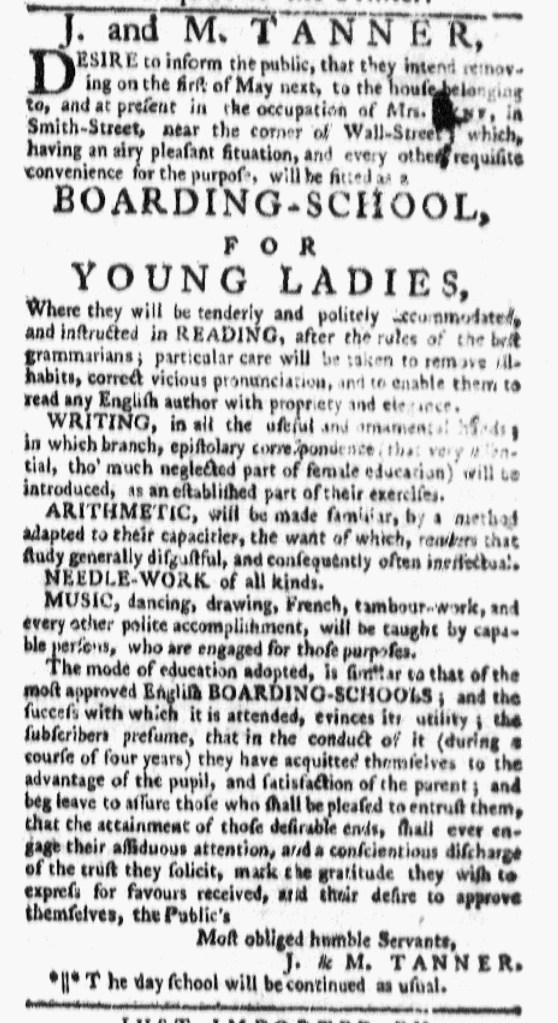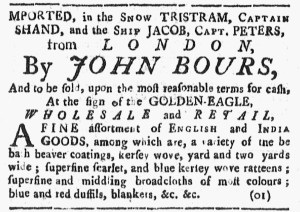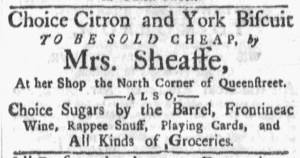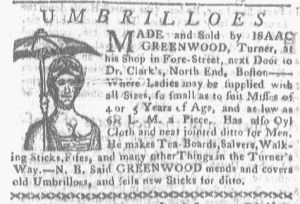GUEST CURATOR: Clare Teskey
What was advertised in a colonial American newspaper 250 years ago today?

“A neat post coach.”
John King’s advertisement for this “coach” first interested me because, according to Ron Vineyard at Colonial Williamsburg, coaches were bought mainly by the gentry (or upper class) in eighteenth-century America. Upon further consideration, however, I noticed that this was an advertisement for a “post coach,” which confused me, as I thought that only the postal system would have use for “post coaches.” Most people rode horses or travelled by foot at this time, but those who had the luxury of owning a coach could decide between different kinds of coaches. In “Wheeled Carriages in Eighteenth-Century Virginia,” Mary Goodwin identified “plain,” “neat ornamented,” “town,” “travelling,” and “elegant crane neck” coaches among the variety of coaches that buyers could choose from, as well as “post coaches.” Depending on the size and price of the coach, buyers had certain preferences about the coach they would purchase. While “post coaches” were typically used by the postal system for the distribution of mail in the colonies, they could also be bought by private owners, who may have enjoyed the style, price, and other features of the vehicles.
**********
ADDITIONAL COMMENTARY: Carl Robert Keyes
John King sought to sell a used post coach. In his advertisement in the April 14, 1774, edition of the Maryland Gazette, he noted that the wheels “are as good as new, and the carriage in good order, having been through a thorough repair last year,” assuring prospective customers that even though the carriage was used it was in good order. He also had a “genteel phaeton” for sale at his stables in Annapolis, that carriage also presumably used.
In selling secondhand carriages, King competed with Pryse and Parker, “COACH and COACH HARNESSMAKERS from London,” and the new carriages they built according to the instructions they received then customers placed orders. In the same issue that carried King’s advertisement, Pryse and Parker once again inserted their notice to inform the public that they acquired “the best materials for the coachmaking business, which they now carry on, in all its various branches.” Colonizers in the market for a coach had the option, if they wished, to order a new one made to their specifications, one that matched the latest styles in London and port cities in the colonies.
Yet new coaches were more expensive than secondhand coaches, not unlike new and used cars today. Consumers made decisions that took into account price, quality, fashion, and prestige. The eighteenth-century marketplace for carriages anticipated some of the common practices of the modern automobile industry, especially when it came to used carriages. For instance, Adino Paddock, a coachmaker in Boston, advertised that he “will take second hand Chaises in part Pay for new,” a version of trading in a new vehicle to reduce the cost of a new one. He also offered for sale a “very good second-hand Coach, Curricule, and several Chaises, some almost new.” Paddock operated a precursor to a used car lot, making bargains available to those who chose not to invest in new carriages. With a “neat post coach” and a “genteel phaeton” for sale at his stables, King adopted a similar business model.









